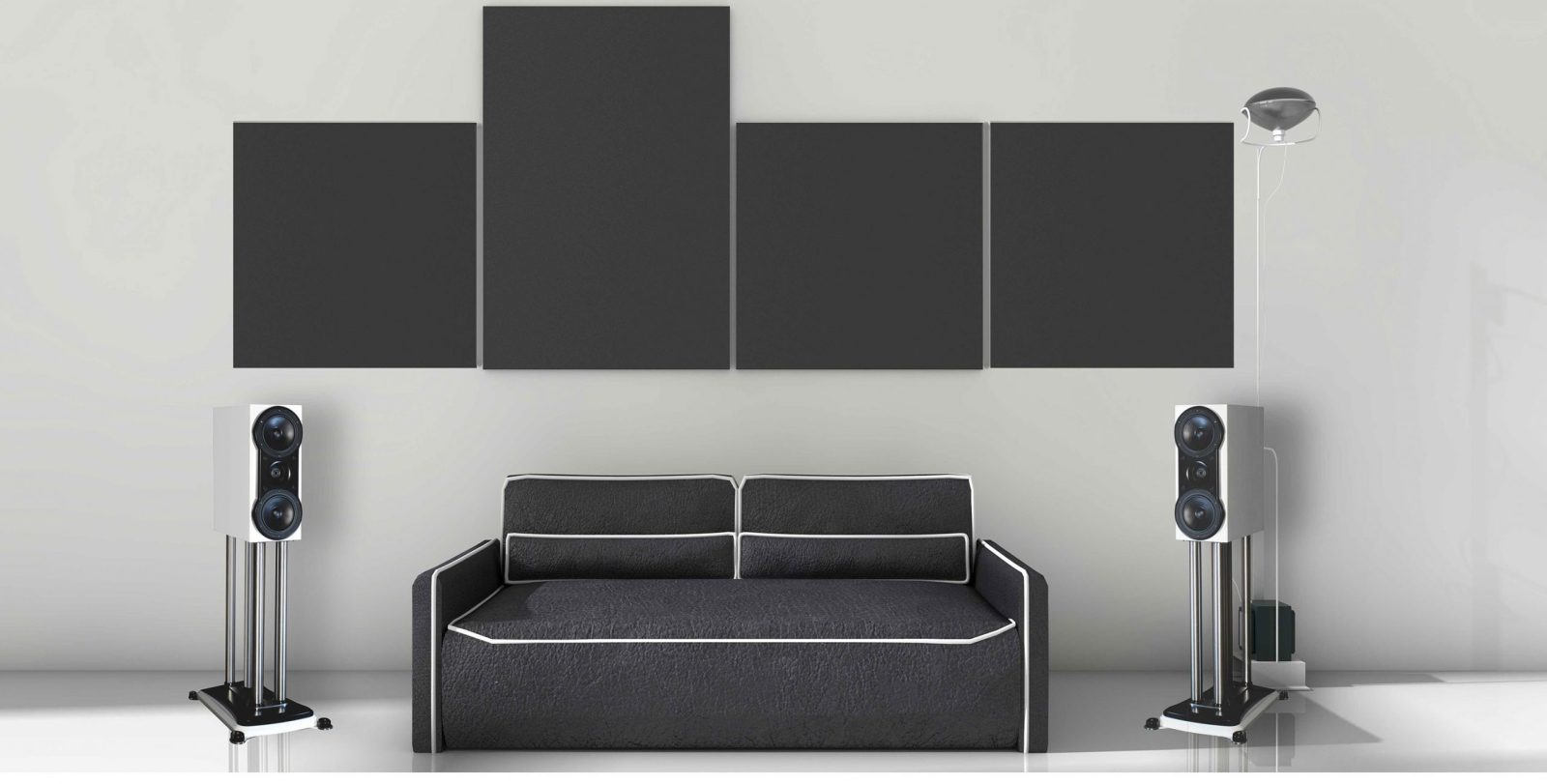Scenario – 1
This is the ideal scenario. The speakers are at least 50 -60 cm away from the rear wall. There is nothing in between the speakers (especially at ear level).
The loudspeakers are positioned symmetrically in the room so that distances to the rear and side walls are equal for both left and right. The listening position is symmetrical relative to both channels.
There is moderate acoustic treatment (panels) to shorten the reverberation time of the room,
Finally, the speakers are tilted back 3 to 4 degrees to negate standing waves between floor and ceiling.
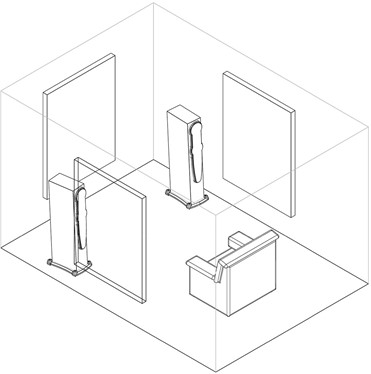
Scenario – 2
Whilst we have achieved good symmetry, The loudspeakers are pushed into the corners.
In this position, your ear will not be able to differentiate the direct sound from the reflected sound. You will hear a louder bass due to boundary reflections, but you lose detail and speed in the bass. If you need to boost low frequencies by using this position and you feel that the bass is still fast and articulate for you, then it makes good sense to use the boundaries of your room to boost the bass.
The large soft couch acts as an absorber in the mid to high-frequency range. This may diffuse your centre stage.
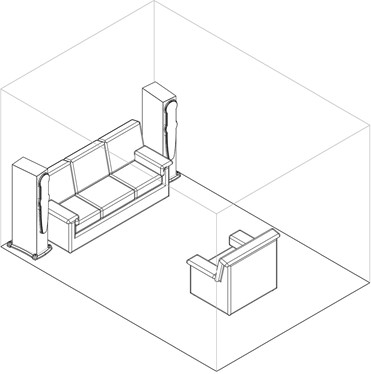
Scenario – 3
Here we have moved the speakers away from the corners’ However the symmetry is not good.
The large couch on the right will both block and absorb sound waves. Your centre stage and depth will suffer as a result.
See the next illustration for a possible solution to this problem
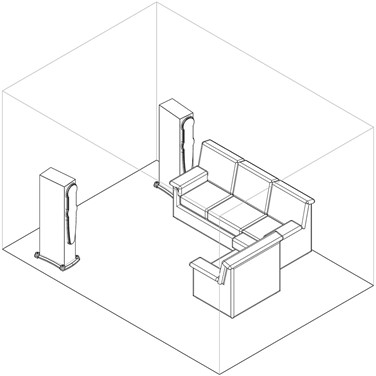
Scenario – 4
Here we have managed to get a number of issues resolved.
The speakers are away from the rear walls.
We have diminished the amount of furnishing between the speakers and reduced the negative effects substantially.
You still have a central & symmetrical listening position. Of course, you can have a convenient and relaxing sleep once your music has washed all your stress away!
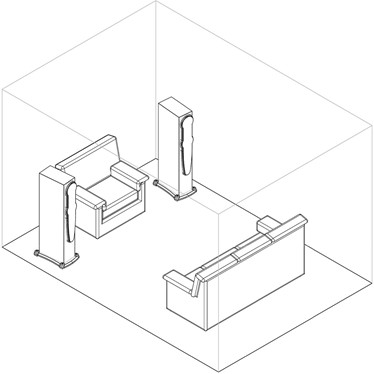
Scenario – 5
This represents an open-plan room, where there is no wall on the right.
The obvious solution is to swing the whole system around so that the speakers now fire into the width of the room.
We’ve drawn a bookcase in between the speakers; a common problem, but we have no wall on the right that affects the symmetry & we have a bookcase in between the speakers that creates all manner of issues.
In summary, there is poor symmetry and too much clutter in between the speakers. Please see the next illustration for a possible solution to this.
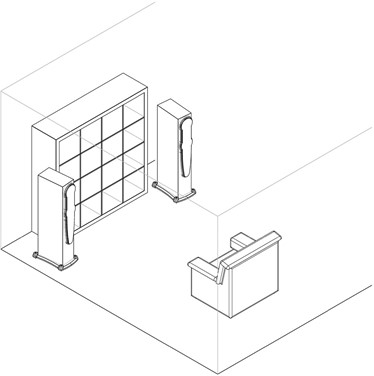
Scenario – 6
Here, we have moved the bookcase to the right side – the open-plan side.
We are creating a false wall. Whilst it is not as ideal as the left wall, it does become a boundary and ensures a reasonably symmetrical layout.
The listening position is symmetrical and the room is perceived (to the ear) as symmetrical.
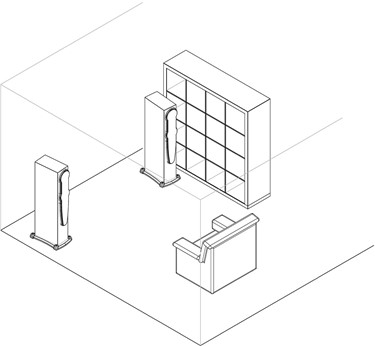
THE FINAL STEP – very important.
- Once you have determined the best position for your loudspeakers, you need to lock the spikes.
- Use the spikes to incline the speakers backwards 3-4 degrees. This almost always resolves standing waves between the floor and ceiling. It attenuates the high frequencies (as you move off axis). There is a slot for a screw-driver on the spike so you can adjust from the top.
- Make sure the loudspeaker is firm on the floor and should not rock in any direction.
- Ensure the loudspeakers are true in the vertical plane referenced from the side of the speaker.
- Once you have completed all the above, hand tighten the dome lock nut. You can use a #13 spanner to tighten the M8 lock nuts underneath the plinth. Hand tighten first and use the spanner to tighten further, but no more than a quarter turn with the spanner. Double check that all connections are in phase.
